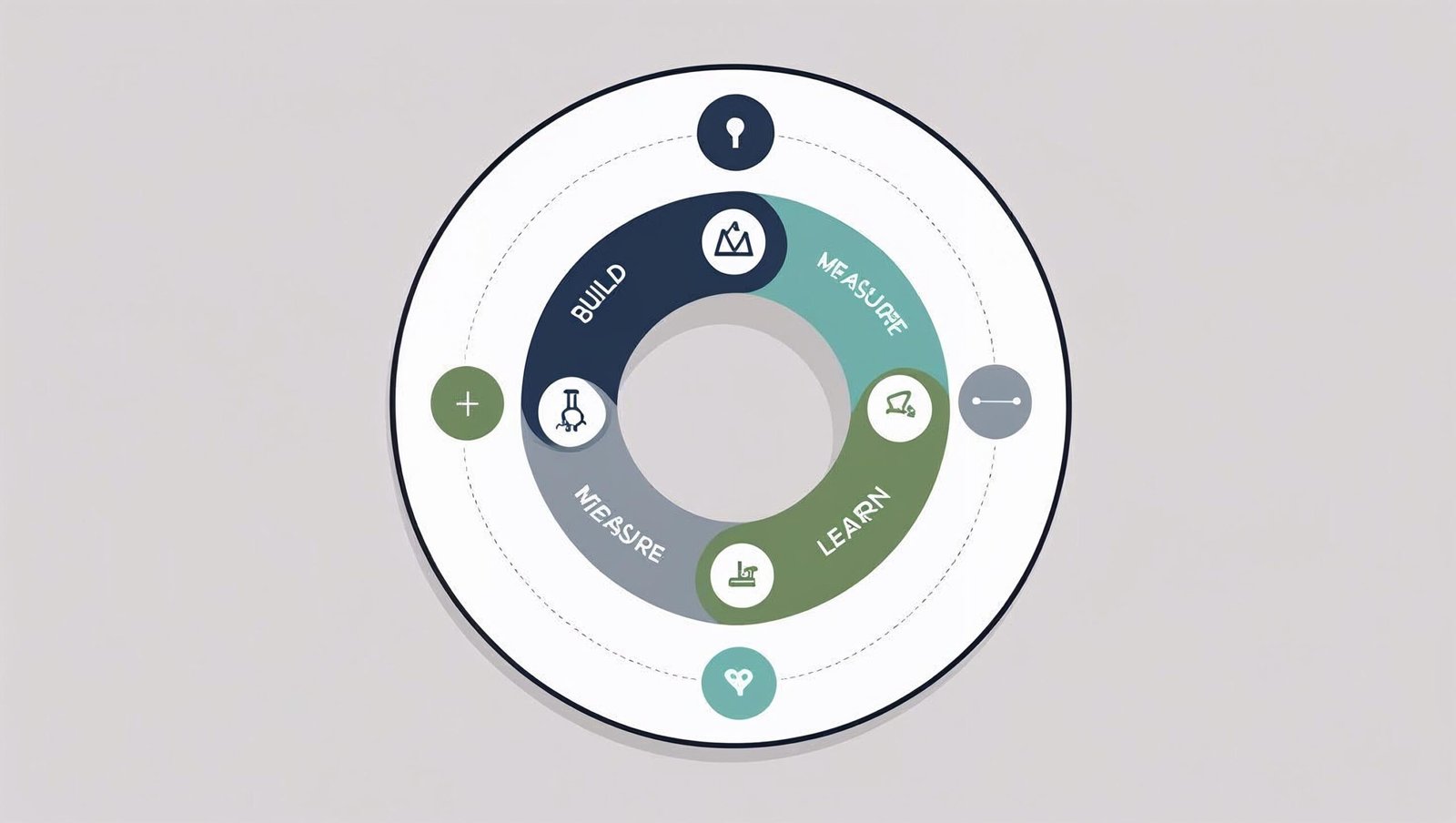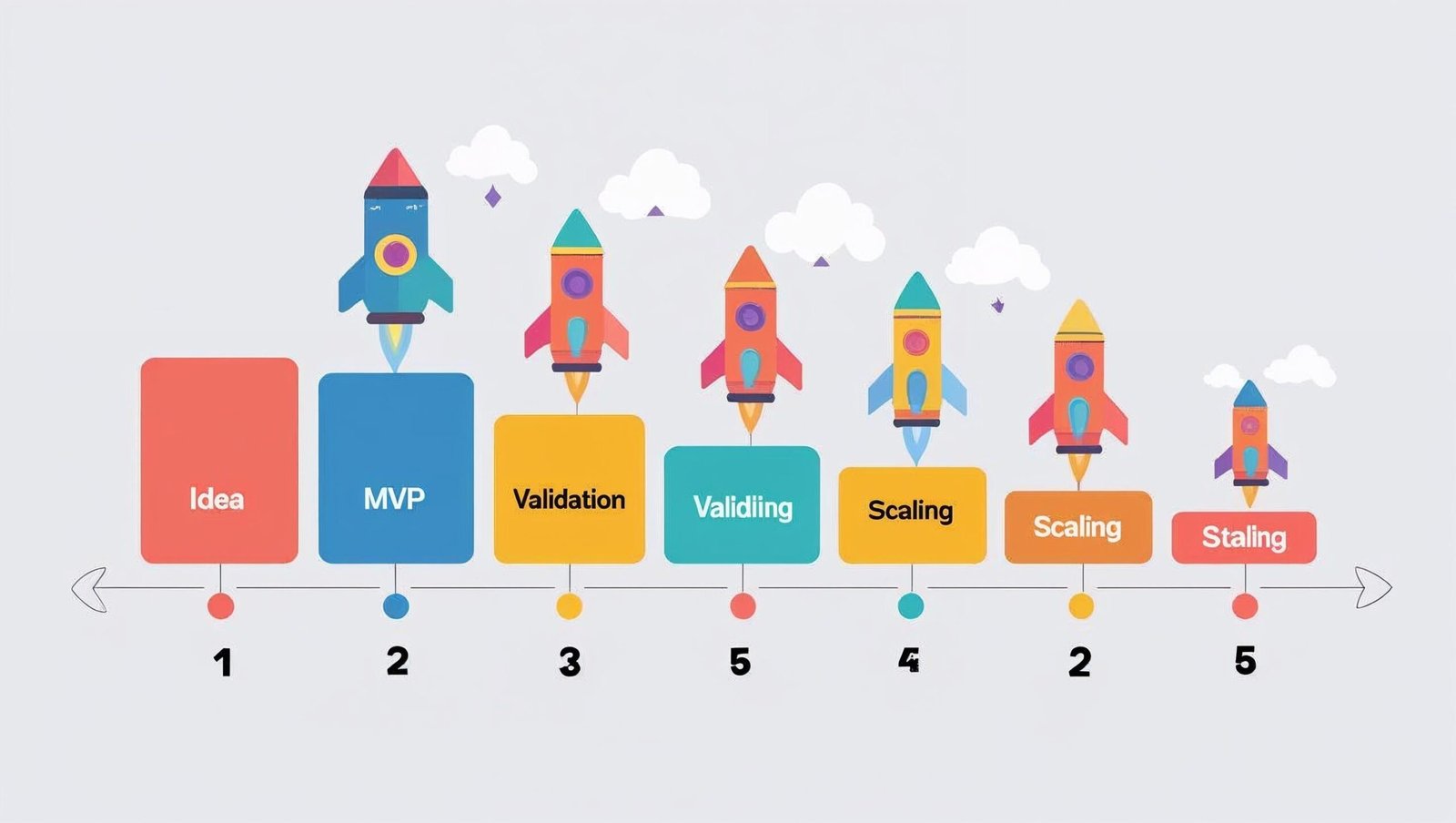Introduction:
The Lean Startup by Eric Ries is not merely a book—it is a transformative doctrine for entrepreneurs aspiring to navigate the precarious waters of startup creation and sustenance. As the global economy pulsates with digital dynamism and market volatility, the strategies enunciated in this seminal work become ever more indispensable.
In this comprehensive review of The Lean Startup by Eric Ries, we shall examine its foundational precepts, structural paradigms, and real-world relevance. The blog post integrates seven explosive lessons derived from the text, reflecting upon the ideas of validated learning, minimum viable product, pivoting, and innovation accounting, among others.
Let us delve deep into this intellectual armamentarium, fashioned meticulously by Eric Ries, that empowers startups to thrive where others fail.

1. Validated Learning – The Keystone of Success
At the heart of The Lean Startup by Eric Ries lies the concept of validated learning. This doctrine teaches that learning must be tested through real experiments and concrete data, not assumptions or intuition.
Eric Ries contends that every startup exists to learn how to build a sustainable business. Rather than relying on abstract ideation, the book urges entrepreneurs to gather data, test hypotheses, and constantly revise their path forward.
This emphasis on empiricism demarcates The Lean Startup by Eric Ries from conventional business literature that glorifies intuition or serendipity. Validation, therefore, emerges as a sacred obligation for startup founders.
2. Minimum Viable Product (MVP) – Launch Before You Are Ready
A defining contribution of The Lean Startup by Eric Ries is the strategic deployment of the Minimum Viable Product (MVP). The MVP is not an incomplete or sloppy version of the final product but a carefully calibrated prototype designed to test hypotheses.
The MVP allows entrepreneurs to engage early adopters, test demand, and learn crucial lessons with minimal expenditure. In this context, The Lean Startup by Eric Ries warns against perfectionism and glorifies frugality in experimentation.
By building an MVP and iterating upon feedback, businesses accelerate the feedback loop and minimise waste—two tenets Ries prizes highly.
3. The Build-Measure-Learn Feedback Loop
The Build-Measure-Learn cycle is the lifeblood of The Lean Startup by Eric Ries. Instead of lengthy development cycles divorced from customer feedback, this loop calls for swift action and constant evaluation.
Entrepreneurs are exhorted to build MVPs quickly, measure performance via relevant metrics, and learn whether to persevere or pivot. Each loop tightens the feedback system and reduces uncertainty—a deadly adversary in early-stage ventures.
Eric Ries introduces innovation accounting here—a method to measure progress when traditional financial metrics are inadequate. This again underscores the ingenuity behind The Lean Startup by Eric Ries.
4. Pivot or Persevere – Making Bold Decisions
Another explosive idea in The Lean Startup by Eric Ries is the pivot. A pivot is a structured course correction, designed to test a new hypothesis about the product, business model, or growth engine.
Recognising when to pivot is both an art and a science. The author provides clear signals—stagnation in key metrics, market indifference, or failed MVPs—as indicators that a pivot may be warranted.
This section of The Lean Startup by Eric Ries encourages founders to be brave. Clinging to a failed strategy out of sunk cost fallacy can ruin a startup. Courage to pivot can resurrect it.
5. Innovation Accounting – Measuring What Truly Matters
Traditional accounting falls short in startup environments. The Lean Startup by Eric Ries introduces innovation accounting, a framework for startups to measure progress, set actionable goals, and hold teams accountable.
The process includes establishing a baseline (via MVP), tuning the engine (via iterations), and deciding to pivot or persevere.
This is especially salient in environments where customer acquisition may initially be low, but learnings are high. The Lean Startup by Eric Ries thus proposes a new metric system grounded in learning and adaptability.
6. Sustainable Growth – Achieving Scale Without Chaos
Contrary to the belief that rapid growth is always desirable, The Lean Startup by Eric Ries advocates for sustainable growth.
This growth comes through repeatable, scalable channels, not erratic viral explosions. Ries categorises growth engines into three types—Sticky, Viral, and Paid—each requiring a tailored strategy.
Startups must analyse which engine is most effective and optimise accordingly. This data-driven approach from The Lean Startup by Eric Ries prevents premature scaling—one of the leading causes of startup collapse.

7. Entrepreneurial Management – Leading Through Chaos
One of the most radical tenets of The Lean Startup by Eric Ries is its redefinition of entrepreneurship as management.
Startups, though chaotic and exploratory, require disciplined leadership. This includes setting innovation milestones, building lean teams, and encouraging constructive failure.
Unlike conventional companies, startups demand agility and tolerance for ambiguity. The Lean Startup by Eric Ries equips leaders with tools to steer through turbulence without sacrificing vision or momentum.
The Broader Philosophy of Lean Thinking
The lean methodology, in its broader philosophical sense, stems from the Japanese manufacturing revolution, particularly the Toyota Production System. It emphasises efficiency, elimination of waste, and continuous improvement. In the realm of business innovation, these principles hold immense relevance.
The approach calls upon entrepreneurs to be scientists rather than gamblers. Each decision must be tested, validated, and refined. The bias is not toward speed for its own sake but toward speed of learning. This subtle shift in priority alters the entire trajectory of a product’s lifecycle.
When companies invest months or years into product development without customer feedback, they risk building something the market does not need. Such misalignment has historically been the downfall of many ambitious ventures. The alternative proposed is to involve the customer early and often. Businesses must operate not as factories, but as laboratories.
Experimentation Over Assumption
In traditional management, assumptions often go unchallenged. Business plans become gospel, and deviation is considered failure. However, modern markets are too fluid for rigid structures. The most resilient enterprises are those that treat every hypothesis as tentative.
Scientific experimentation becomes the compass. Instead of investing in untested ideas, successful ventures gather feedback quickly and act upon it. The sooner a business realises an assumption is false, the better positioned it is to recalibrate. Failure in this context is not a setback—it is a source of insight.
The concept of iterative development also underlines this mentality. Launching with a prototype and improving in cycles ensures that businesses remain aligned with market realities. Progress is no longer measured in volume of code or marketing budget but in knowledge accrued.
The Human Element in Innovation
Though much emphasis is placed on systems, processes, and data, one cannot ignore the human element. Behind every startup is a team of individuals driven by vision, hope, and risk. The emotional toll of uncertainty, rejection, and iteration is enormous.
Leaders must therefore cultivate a culture that values psychological safety. Teams should feel empowered to share unconventional ideas and admit when something is not working. Fear of punishment or ridicule stifles innovation at its root.
Moreover, customer empathy plays a crucial role. Successful products are not just technically sound—they resonate with real human problems. Understanding pain points, desires, and aspirations requires more than surveys; it demands immersion, observation, and empathy.
Role of Agility in Volatile Markets
Economic cycles, technological disruptions, and shifting consumer preferences make agility indispensable. Companies that rigidly follow initial plans may find themselves irrelevant by the time they reach the market. Flexibility, therefore, becomes a competitive advantage.
Agile development methodologies, such as Scrum or Kanban, reinforce this mindset. By working in sprints, teams maintain momentum while remaining adaptable. Each cycle is a chance to reflect, refine, and redirect efforts based on evidence.
What distinguishes an agile organisation is not speed but responsiveness. The ability to recognise subtle shifts and react appropriately separates enduring firms from transient ones. This agility must be cultivated in processes, but also in people.

Importance of Customer Feedback
Real-time feedback is the currency of progress. Businesses that isolate themselves from their end users risk building castles in the air. Regular interaction with customers offers qualitative depth that metrics alone cannot provide.
Customer interviews, usability tests, beta testing, and community forums are all avenues through which organisations can remain grounded. The voice of the customer must be embedded in every strategic and operational decision.
Moreover, listening is not enough—responding swiftly and authentically is key. When users feel heard, they become allies in the product’s evolution. They contribute ideas, identify blind spots, and evangelise solutions. Such relationships cannot be outsourced; they must be nurtured.
Data-Driven Decision Making
In the digital age, decisions based on intuition or hierarchy are becoming obsolete. Modern tools provide a wealth of analytics that, when interpreted correctly, offer a reliable map of user behaviour and engagement.
Click-through rates, churn statistics, feature adoption curves—these metrics reveal more than success; they uncover friction, disinterest, or confusion. Every number tells a story, and it is the entrepreneur’s task to read between the lines.
Yet, data must not paralyse action. Analysis paralysis is a danger. The goal is to balance gut instinct with empirical evidence. Sometimes, the most impactful innovations begin with a hunch—but they must eventually stand up to scrutiny.
Failures as Building Blocks
Failure, in the context of innovation, must be rebranded. Rather than something to fear or avoid, it becomes an essential stage in the learning journey. Each failed experiment uncovers hidden truths, reshapes hypotheses, and sharpens intuition.
Organizations that punish failure discourage risk-taking. Instead, a healthy tolerance for failure—when it stems from bold attempts to learn—fosters creativity and perseverance. Post-mortems, retrospectives, and feedback loops institutionalize learning from missteps.
The key is to fail fast and cheaply. Small failures are far less costly than monumental ones born from prolonged ignorance. This logic reinforces the need for early testing and rapid iteration.
Innovation Inside Established Firms
Startups are not the only beneficiaries of lean methodologies. Large corporations, often bogged down by bureaucracy, can become more dynamic by embracing a similar philosophy. Internal innovation labs, cross-functional teams, and entrepreneurial mindsets can rejuvenate legacy firms.
The challenge lies in overcoming cultural inertia. In traditional firms, rewards often favour stability over risk. Changing this narrative requires visionary leadership and systemic reforms.
By allowing small teams to operate with autonomy, granting them freedom to test and pivot, even the largest organisations can behave like nimble startups. The future belongs to enterprises that combine scale with agility.
The Role of Mentorship and Ecosystem
No business journey exists in isolation. The presence of mentors, advisors, and a supportive ecosystem can significantly enhance the success rate of new ventures. Accelerators, incubators, venture capitalists, and innovation hubs form an integral part of this support system.
These entities provide not only capital but also knowledge, networks, and perspective. Mentors who have walked the path offer shortcuts through wisdom. Peers in the ecosystem contribute collaboration and healthy competition.
In a robust entrepreneurial ecosystem, knowledge circulates, best practices are shared, and failures are de-stigmatised. This sense of community strengthens the resolve of individual founders and teams.

Simplicity Over Sophistication
Complex solutions may appear impressive, but simplicity often wins in real-world scenarios. A product that does one thing flawlessly is preferable to one that attempts ten features poorly.
Stripping away excess and focusing on the core user problem increases usability, reduces bugs, and clarifies messaging. Clarity is not just a design principle—it is a survival strategy.
This principle applies to business models as well. A convoluted revenue strategy confuses investors, partners, and users alike. The most enduring ventures have crystal-clear value propositions and monetisation strategies.
Ethical Considerations in Innovation
Modern consumers care deeply about ethics. Transparency, fairness, environmental impact, and inclusivity are no longer optional—they are expectations. Founders must embed these principles from day one.
This involves ethical data collection, equitable user access, and honest marketing. Exploiting psychological vulnerabilities or manipulating user behaviour erodes trust.
Furthermore, teams should reflect the diversity of the user base. Diverse perspectives reduce blind spots and result in more robust, inclusive solutions. The future of innovation is not just lean—it is ethical, sustainable, and human-centric.
The Global Impact of The Lean Startup by Eric Ries
The global startup ecosystem reverberates with the influence of The Lean Startup by Eric Ries. From Silicon Valley to New Delhi, its principles guide incubators, accelerators, and venture capitalists.
Governments, too, have adopted its frameworks to build resilient startup policies. By transforming the cultural narrative around failure, The Lean Startup by Eric Ries bestows legitimacy on experimentation.
Strengths of The Lean Startup by Eric Ries
-
Pragmatic Approach: Grounded in real-world experiments.
-
Universality: Applicable to tech startups, nonprofits, and even corporate innovation teams.
-
Tool-rich: From MVP to pivoting, provides clear frameworks.
-
Ethical Entrepreneurship: Advocates transparency and learning over ego.
Criticisms of The Lean Startup by Eric Ries
-
Over-simplification: Some critics argue the MVP strategy may not suit all industries, especially those requiring heavy R&D.
-
Metrics Overload: Risk of over-relying on data at the expense of intuition.
-
Lack of Philosophical Depth: The book is practical but light on deeper business philosophy.
Despite these, The Lean Startup by Eric Ries remains indispensable for aspiring and seasoned entrepreneurs alike.

Final Reflections on Entrepreneurial Resilience
In a world where disruption is the norm and adaptability determines survival, adopting a systematic approach to innovation is no longer optional—it is imperative. Every venture, regardless of its scale or industry, benefits from cultivating a mindset that values learning, experimentation, and resilience. Success lies not in rigid adherence to outdated methods, but in embracing change with clarity and courage. True progress emerges when vision is aligned with action, and when every failure is transformed into a stepping stone toward mastery.
Conclusion
The Lean Startup by Eric Ries is an indispensable arsenal for every modern-day entrepreneur. It teaches us that building a startup is not a chaotic gamble but a scientific journey of hypothesis, validation, iteration, and transformation.
By embracing the principles of MVP, validated learning, pivoting, and innovation accounting, startups can reduce waste, increase speed, and make data-informed decisions.
The book is not only a guide to launching a business—it is a new mindset. And in today’s high-risk, high-opportunity economy, adopting this mindset is not optional; it is vital.
Visit shubhanshuinsights.com to explore more such insightful book reviews.
Frequently Asked Questions (FAQs)
Q1. Who should read The Lean Startup by Eric Ries?
A1. Entrepreneurs, product managers, startup enthusiasts, and innovation-driven executives will benefit immensely from this book.
Q2. Is The Lean Startup by Eric Ries relevant in 2025?
A2. Absolutely. Its principles are timeless, especially in today’s fast-evolving digital economy.
Q3. What is the core message of The Lean Startup by Eric Ries?
A3. To build sustainable businesses through continuous innovation, data-driven decisions, and customer-centric development.
Q4. Can this book help existing businesses, not just startups?
A4. Yes. Large enterprises can apply lean methodologies to spur innovation and reduce bureaucratic inertia.
Q5. Where can I buy The Lean Startup by Eric Ries?
A5. It is available on Amazon, Flipkart, and other major bookstores in both physical and digital formats.
If you found value in this review, kindly drop your thoughts below or share your own entrepreneurial experiences with The Lean Startup by Eric Ries.